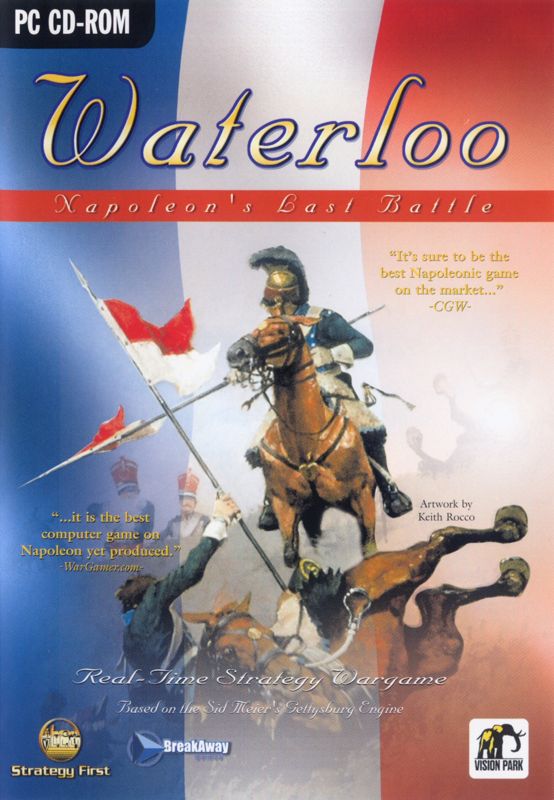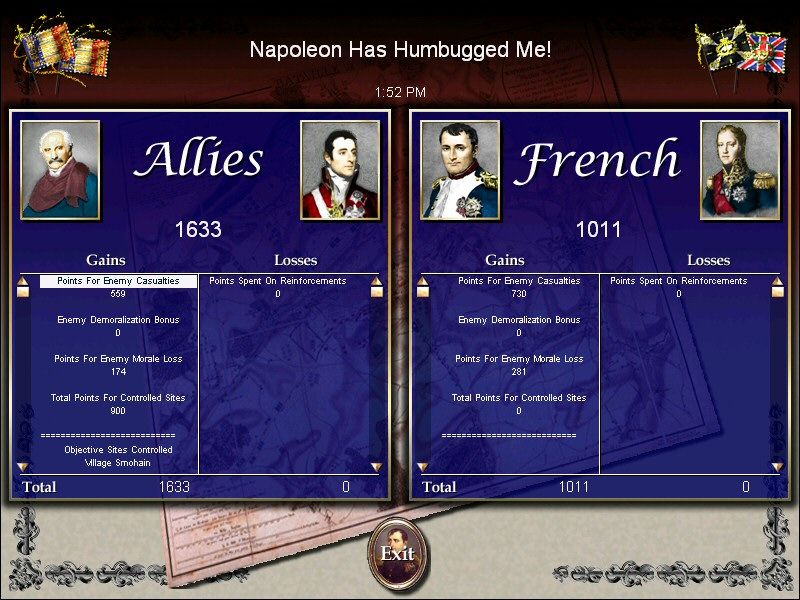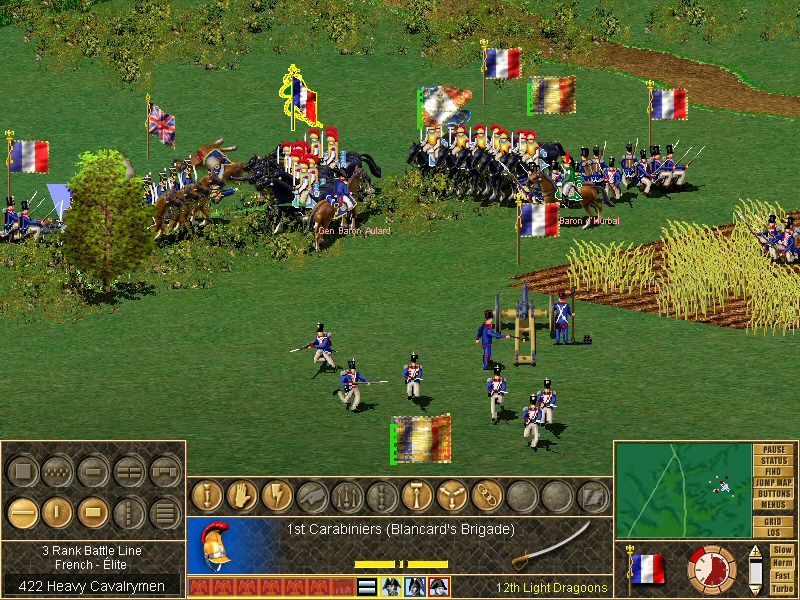Retro Replay Review
Gameplay
Waterloo: Napoleon’s Last Battle puts you in the boots of history’s greatest tacticians, offering the choice to command either Napoleon’s legendary Old and Young Guard or Wellington’s disciplined redcoats. The controls are intuitive, with a familiar point-and-click interface inherited from Sid Meier’s Gettysburg engine, yet there’s considerable depth beneath the surface. You’ll micromanage unit formations, set musket volleys, coordinate cavalry charges and manage reserves, all while keeping an eye on morale and fatigue.
(HEY YOU!! We hope you enjoy! We try not to run ads. So basically, this is a very expensive hobby running this site. Please consider joining us for updates, forums, and more. Network w/ us to make some cash or friends while retro gaming, and you can win some free retro games for posting. Okay, carry on 👍)
The game offers over 25 historical and speculative scenarios, each carefully balanced to recreate or reimagine pivotal moments of the battle. Want to know what might have happened if Napoleon had redeployed the cuirassiers earlier? The speculative scenarios answer that question. For purists, the strictly historical engagements range from the opening artillery duels on Hougoumont to the final clashes near La Haye Sainte. Each mission comes with a briefing that grounds you in the terrain and objectives, lending a palpable sense of urgency to every cannonball and bayonet charge.
Beyond the pre-set battles, Waterloo’s scenario editor empowers you to craft entirely new confrontations. Random map generators and customizable force rosters mean no two encounters need ever be the same. For those seeking competitive play, the multiplayer component supports up to eight players over LAN or Internet, so you can test your strategic mettle against friends or foes. If you prefer solo play, the AI adapts tactics based on your deployments, offering a challenging opponent even after dozens of rematches.
Graphics
Visually, Waterloo strikes a balance between historical authenticity and practical clarity. The top-down battlefield view gives you a sweeping perspective on troop dispositions and key landmarks, while zoomed-in sprites showcase uniforms with remarkable attention to detail. The developers have faithfully rendered over 60 different uniform variants—hussars with their pelisses, dragoons in dark green, even the famed cuirassiers—so every unit looks distinct on the field.
The battlefields themselves are dotted with historical landmarks such as the farmhouse at La Haye Sainte, the sunken lane at La Haye, and the walled gardens at Hougoumont. These structures aren’t just eye candy; they play a strategic role, offering cover and chokepoints that mirror the real tactics used in 1815. Terrain textures—fields, woods, gentle rises—are clear and functional, ensuring you never lose sight of troop formations even when the action grows frenetic.
Animations are competent if somewhat restrained: infantry march in columns, cavalry charges with realistic momentum, and artillery recoil follows each volley. While the engine doesn’t push the boundaries of modern 3D graphics, its strength lies in presenting complex Napoleonic warfare in a way that’s both historically evocative and immediately legible. Unit icons, morale indicators, and range arcs overlay the map cleanly, letting you make split-second decisions without sifting through menus.
Story
Although Waterloo is a grand strategy simulation rather than a narrative-driven title, its storytelling emerges through scenario design and meticulous historical detail. Each scenario opens with a concise but informative briefing that sets the stage—your mission goals, known enemy dispositions, and the challenges posed by terrain and timing. These contextual introductions give each replay a fresh sense of purpose, whether you’re defending Hougoumont’s walls or launching a final push against the British center.
The game’s focus isn’t on individual characters but on the ebb and flow of entire armies. You’ll feel the weight of decision-making as your orders reshape the course of history: will you commit the Imperial Guard at the critical moment, or hold them in reserve for a last-ditch counterattack? The absence of cutscenes or character dialog keeps the pace brisk, and the drama unfolds organically in the clash of muskets and saber-to-saber encounters.
Custom and speculative scenarios deepen the narrative possibilities. By adjusting starting positions or reinforcements, you can imagine alternate timelines—what if Napoleon had marched right after Ligny? These “what-if” battles create their own mini-stories, with unexpected breakthroughs and reversals of fortune that rival Hollywood epics in tension. The result is a living tapestry of history, woven from strategic choices rather than scripted events.
Overall Experience
Waterloo: Napoleon’s Last Battle is a compelling blend of historical simulation and accessible strategy gameplay. Its reliance on the proven Gettysburg engine ensures smooth controls and clear presentation, while its Napoleonic focus adds fresh depth with detailed uniforms, authentic terrain and period-accurate tactics. The sheer variety of scenarios—both real and imagined—makes for hundreds of hours of replay value.
The learning curve can be steep for newcomers to grand strategy, especially when juggling musket volleys, cavalry maneuvers and artillery placements simultaneously. However, the in-game tooltips and scenario briefings act as solid primers, and the gradual introduction of units and abilities eases players into the complexities of 19th-century warfare. Multiplayer matches further extend longevity, offering spirited head-to-head contests that test both strategic vision and tactical quick thinking.
Ultimately, Waterloo delivers an immersive window into one of history’s most famous battles, striking a fine balance between authenticity and playability. Whether you’re a Napoleonic enthusiast eager to rewrite history or a strategy fan seeking a richly detailed wargame, this title offers a rewarding battlefield experience that stands the test of time. For anyone intrigued by command-level decision-making and the thrill of large-scale engagements, Waterloo is a must-have addition to your library.
 Retro Replay Retro Replay gaming reviews, news, emulation, geek stuff and more!
Retro Replay Retro Replay gaming reviews, news, emulation, geek stuff and more!









Reviews
There are no reviews yet.